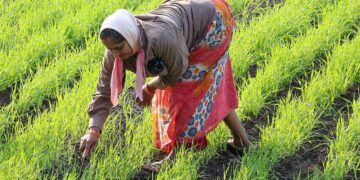The Dark Side of Africa’s Gold Rush
Introduction: A Dazzling Illusion
In recent years, Africa has drawn the attention of gold prospectors eager to unearth its rich mineral resources. Dubbed the continent’s “El Dorado,” regions such as West Africa are witnessing an unprecedented influx of miners seeking fortune. However, while the glittering promise of wealth continues to entice many, there is a looming shadow that accompanies this gold rush—environmental degradation and health risks.
The Attractiveness of African Gold Mining
Africa houses some of the largest unmined reserves globally, making it a magnet for those looking to capitalize on gold extraction. Countries like Ghana and Mali have become hotspots for both large mining firms and artisanal prospectors. In 2020 alone, Ghana produced approximately 4.8 million ounces of gold, reinforcing its status as one of Africa’s leading producers.
Financial Motives Behind Increased Mining Activity
The potential for significant financial gain drives individuals from various backgrounds to participate in this booming industry. With fluctuating global prices nearing $1,900 per ounce in August 2021—an all-time high at that time—many see no option but to take their chances in pursuit of opulence.
Environmental Toll: A Hidden Cost
While the economic allure is compelling, it comes at considerable ecological expense. Unregulated mining activities often lead to severe deforestation and ecosystem disruption. According to recent studies from environmental NGOs, nearly 90% of small-scale mining operations neglect basic environmental safeguards.
Toxic Consequences: Health Risks Impeded by Greed
The use of mercury—a common practice among artisanal miners—poses alarming health risks not only for workers but also for surrounding communities. Mercury contamination can lead to long-term neurological damage and other illnesses among local populations exposed through water sources or food chains.
Regulatory Gaps: An Absence That Fuels Disaster
In several African nations where mining is rampant, regulatory frameworks lack enforcement capabilities or are entirely absent. This absence extends beyond environmental concerns; labor practices often fall short too. Reports indicate child labor remains prevalent within local mining operations due to poverty-driven desperation.
Case Studies: Lessons from Across the Continent
Examining countries like Burkina Faso highlights varying outcomes dependent on governance styles and community engagement initiatives aimed at responsible sourcing practices versus outright exploitation by external entities focused solely on profit margins without regard for sustainable development.
Ghana’s Initiatives Towards Sustainable Practices
Ghana illustrates potential paths towards more responsible approaches resource management through legislation targeting small-scale miners with more oversight while promoting economic inclusivity through cooperatives designed around safe operating standards along with profit-sharing models benefiting entire communities rather than just individual operators chasing quick monetary gains alone.
Conclusion: Seeking a Balanced Path Forward
As Africa continues its journey toward becoming a major player in global gold markets, it is crucial that stakeholders—including governments and international organizations—prioritize sustainable practices with policies designed not just for immediate profits but safeguarding people’s health alongside protecting vital natural resources essential for future generations’ well-being.















